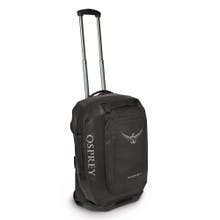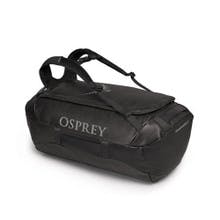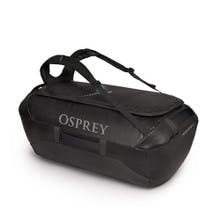Celebrating Earth Month with: Osprey

At Divers Direct, we believe sustainability is everyone’s responsibility. As divers, we don’t just read and learn about the impacts on the environment from books, blogs, and videos. We live and play in it, seeing for ourselves how single use plastics, carbon emissions, harmful chemicals, etc. affect our oceans and waterways. Osprey’s goal to become C0 PFC-free speaks to our heart here at Divers Direct and is a part of why we partner with them.
Enjoying and exploring all that nature has to offer is at the heart of Osprey, so it’s only natural for them to embrace protecting the environment and reducing their environmental impact. And with their first conscientious sustainability efforts dating back to 1995, Osprey knows how to incorporate these practices into their products and processes.
Has Osprey really been working on sustainability efforts since 1995?
Yes. It all started when Osprey’s designers implemented the use of recycled HDPE framesheets for their backpanel suspension for backpacks. And they’ve been innovating and reducing their environmental impact ever since.
But Osprey uses ‘chemicals’ in their manufacturing processes, right?
True; however, not all chemicals are hazardous. When we hear the word ‘chemical’, we all cringe. However, understanding that chemicals are necessary in the production of their products, Osprey committed to minimizing hazardous chemicals as well as the long-term consequences of such chemicals. In fact, Osprey switched over to using the safest, highest-performing chemicals in their manufacturing process…which also has the lowest possible impact on the environment.
How did they do that?
Easier than you think. By avoiding the use of chemicals that are forbidden, reducing the use of chemicals that are restricted and staying within the consumer safety limits, and following the recommended testing practices for each, Osprey is making strides in this area. But they don’t stop there. Osprey is moving to PFC-free chemicals and they utilize strict, audited compliance to ensure they stay on target.
As a way to keep themselves in check, Osprey takes samples of their materials and sends them out to a third party lab for spot checking through chemical analysis. Now that’s raising the bar on holding yourself accountable.
ospreytop sellers
Ok, what’s so special about these bluesign®-approved fabrics?
For a fabric to earn a bluesign®-approved label, it has to meet strict ecological and toxicological requirements. A global effort, BLUESIGN is working to encourage the textile industry to incorporate responsible and sustainable manufacturing practices.
Is there a sustainable difference between using recycled materials versus virgin materials?
Yes. In fact, when producing the material Osprey uses in their products, selecting recycled materials drops their carbon footprint by a minimum of 45%. As an added bonus, materials made from recycled polyester are more likely to be recycled too which further reduces waste and environmental impact.
What about the plastics and boxes used in shipping?
Packaging is a necessity, so Osprey switched to 100% recycled polybags. Ii is important to note that these bags can also then be recycled. And when it comes to the boxes they ship their products in, Osprey uses recycled or Forest Stewardship Council-certified cartons. Going a step further, their hangtags are also created with recycled or Forest Stewardship Council-certified materials. Nice job!
Fun fact: Osprey began sewing Leave No Trace principles into their backpacks in 1997. A simple yet effective way to remind everyone to be gentle with the environment while exploring.
All of this culminates into an amazing partner who truly, deeply cares about the environment and through their actions clearly invests in our planet. We are proud to carry Osprey products in our Divers Direct stores knowing that every purchase of Osprey products is a step in the right, sustainable direction.





